



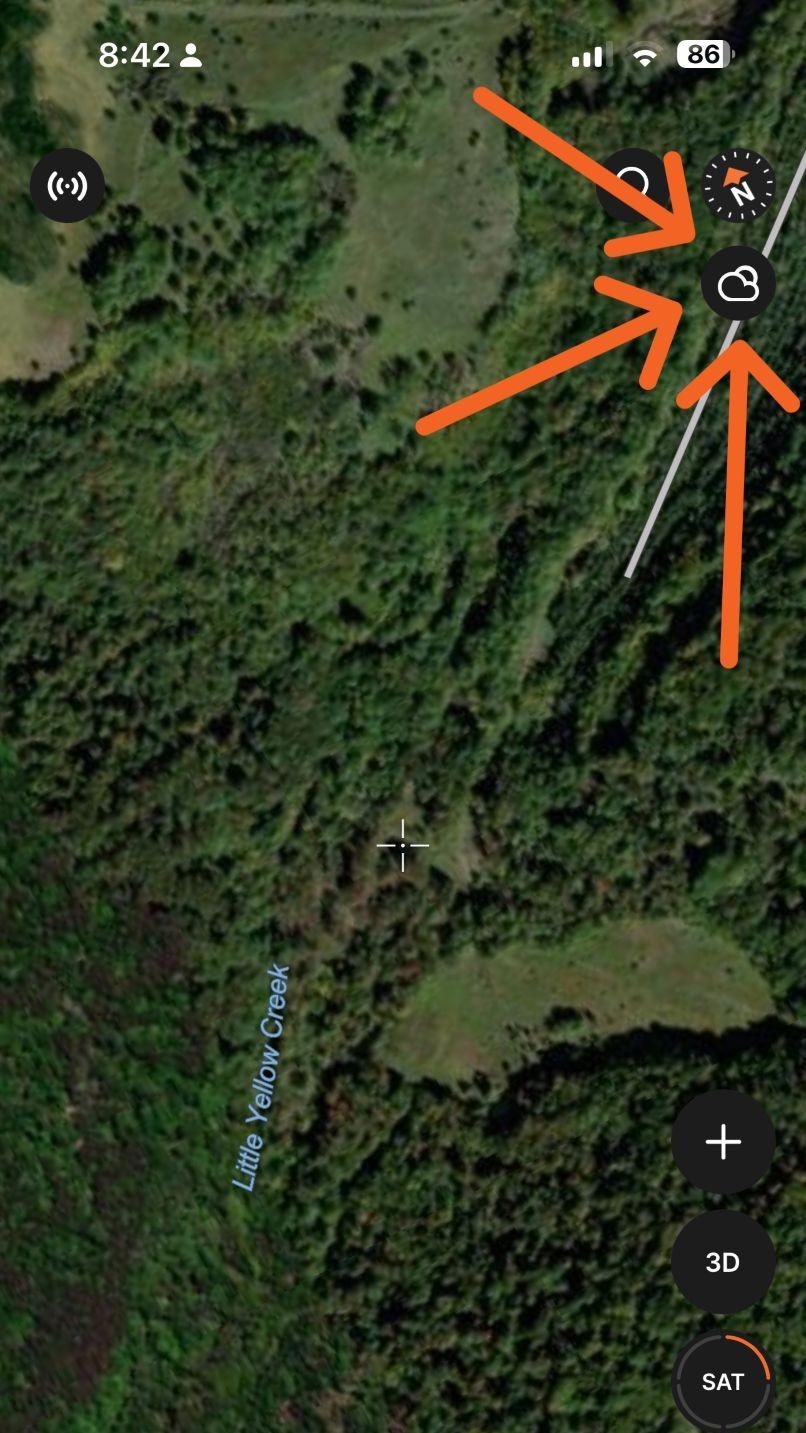
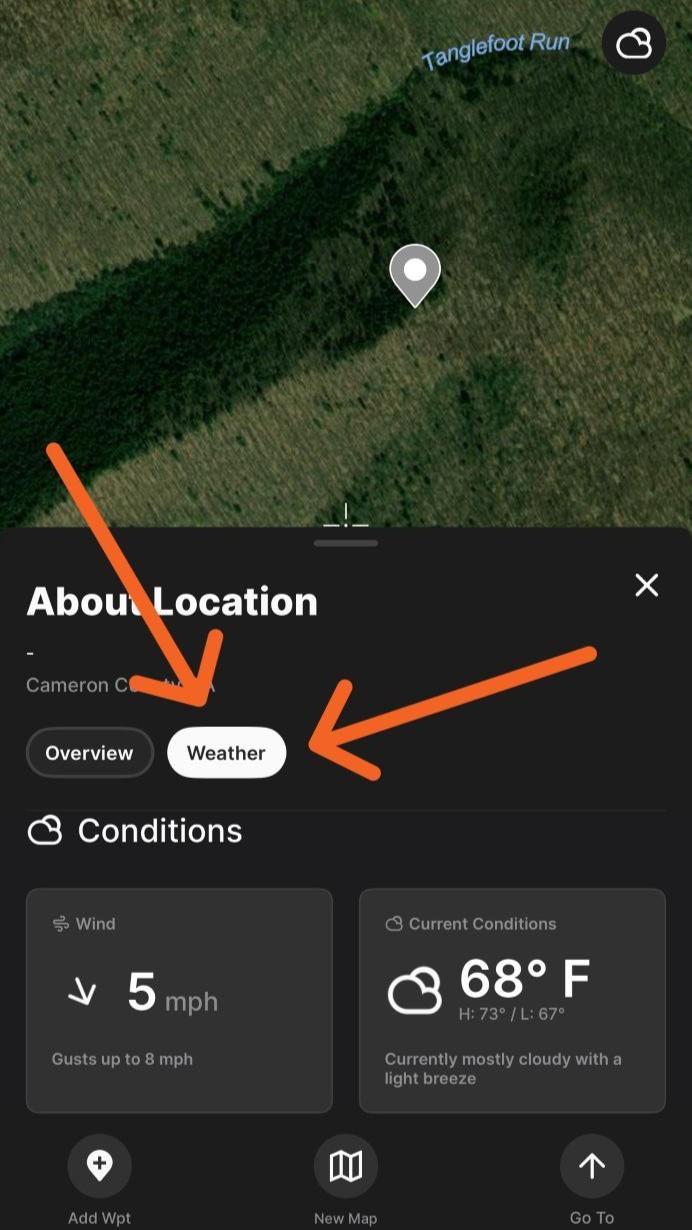
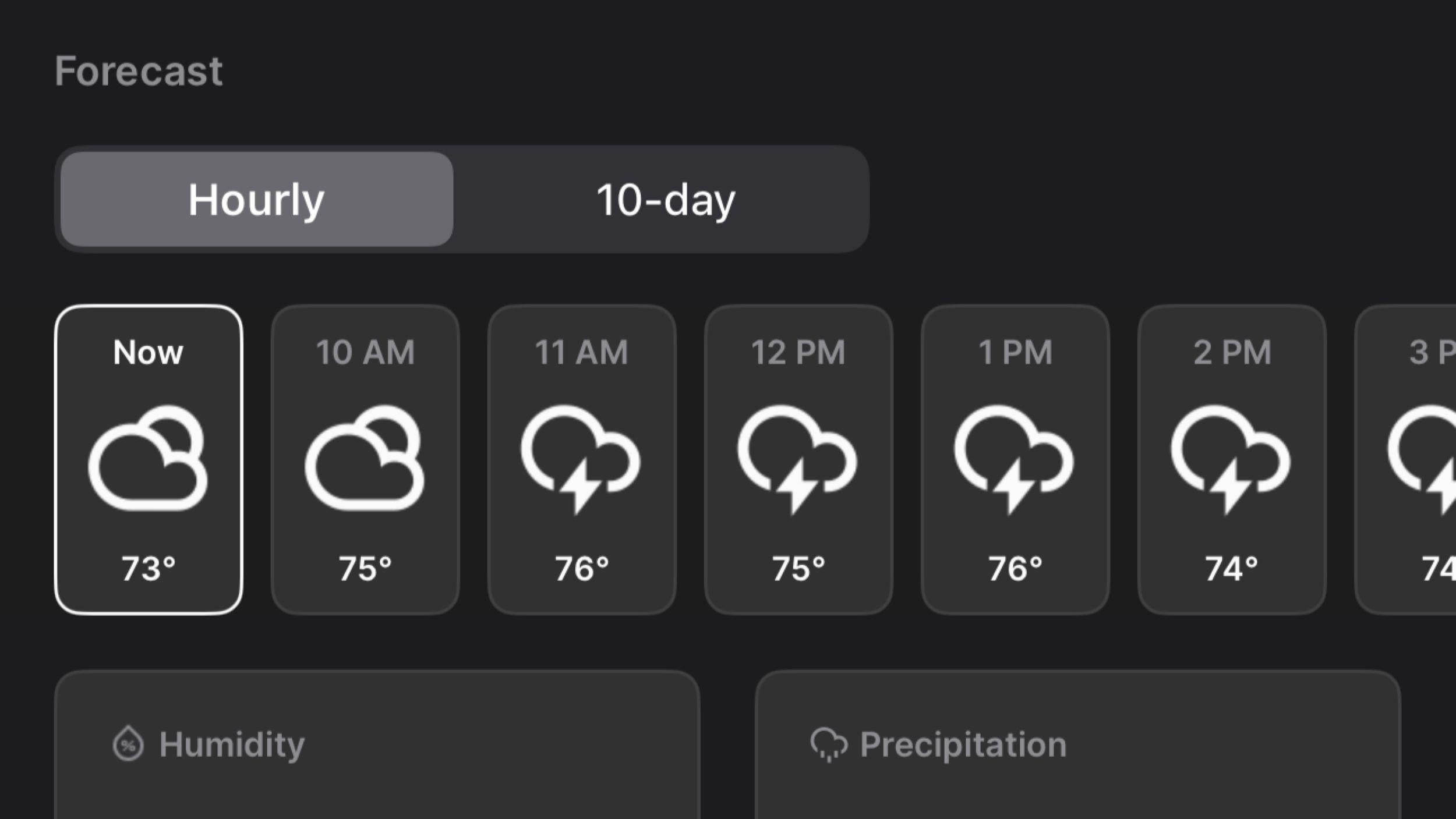
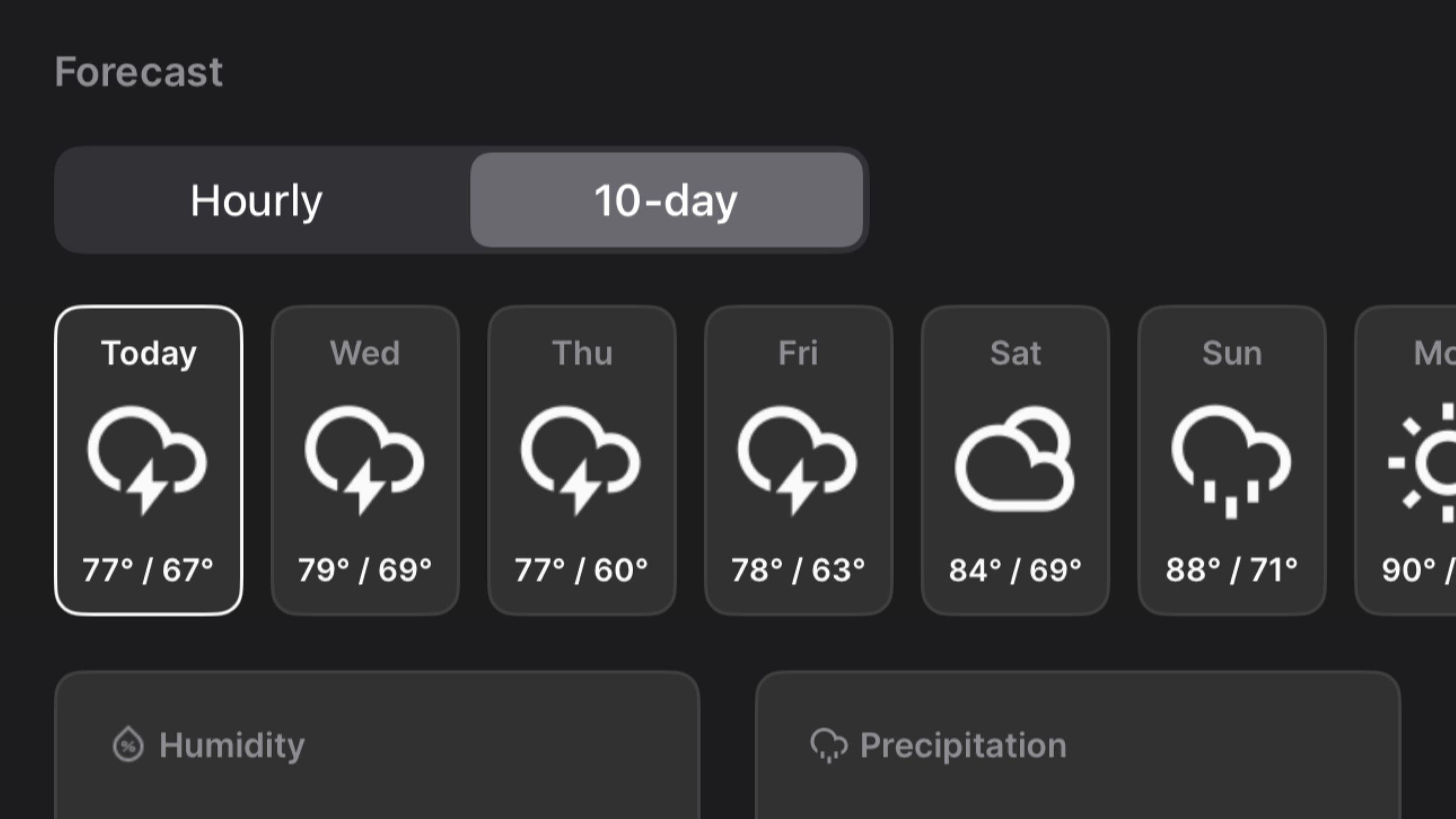
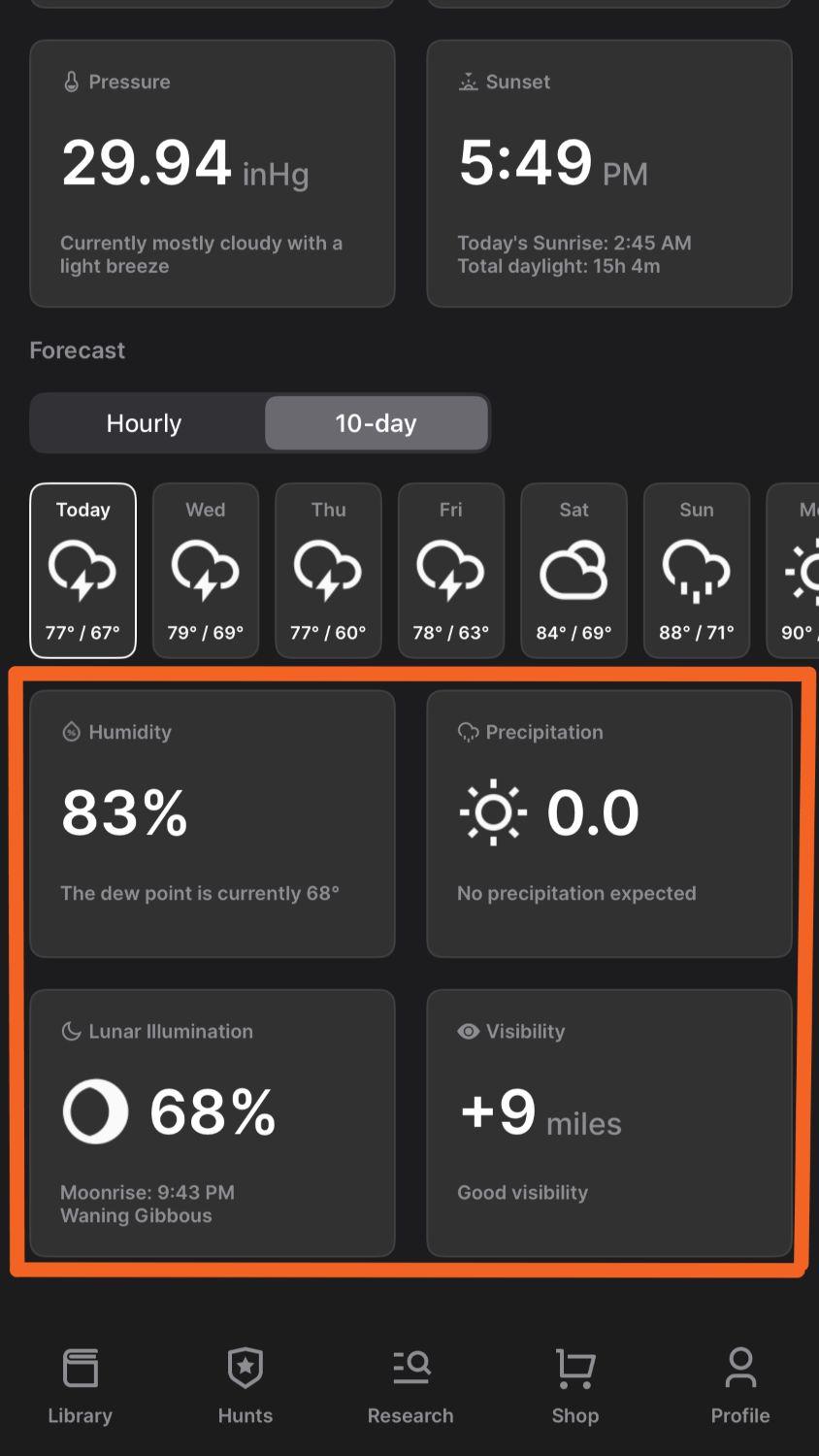
At GOHUNT, we know that successful hunts don’t happen by accident. They’re built on preparation. That means e-scouting maps, understanding terrain, knowing access points, and perhaps most importantly: tracking the weather.
We’re excited to announce that weather data is now seamlessly integrated into the GOHUNT App, thanks to our partnership with Xweather. This is one of the most requested features from our community and now it's here, purpose-built for hunters like you.
Every element of the weather screen was designed with the hunter’s experience in mind. Here’s what you’ll find and why it matters for hunting:
Helps you pack smart, whether you need extra insulation or need to plan for heat and moisture control. This affects your gear list from head-to-toe, including sleep systems, water collection methods, shelter choice, and more. Temperature extremes can also influence animal movement, especially around feeding and bedding periods. High and low temperatures are arguably the most critical data point to know before hitting the field.
Wind can make or break your stalk or sit. Understanding direction and speed helps you figure out how and where the animals will be moving, and how you need to adjust your location to stay undetected. During the hunt, wind speed and direction are critical to planning your approach and ambush location to be in the right place at the right time.
Also known as atmospheric pressure, barometric pressure is the force exerted by the weight of the air in the Earth’s atmosphere. Think of it as the "heaviness" of the air above you. It changes with weather systems and those changes can directly influence the behavior of deer, elk, and other game species.
Many experienced hunters pay close attention to barometric pressure because animals, especially deer and elk are believed to be more active during stable or rising pressure periods. Here are some key reasons why:
Know your legal shooting hours. This also helps with planning your morning approach and ensuring you’re in position well before first light, or safely back to camp before dark. Sunrise and sunset change by a couple minutes every day, so if you’re heading out for a multi-day hunt, make sure to check the light times for the whole trip, not just the day you leave.
As you scroll down the weather view, you’ll get:
Knowing the forecast hour-by-hour, is perfect for planning a mid-day still hunt, setting up for an afternoon sit, or knowing when a storm might roll in. Estimated temperature is shown, as well as an icon to summarize the conditions.
Gives you visibility well into your hunt or upcoming scouting trip so you can adjust plans in advance. Helps in making gear choices to campsite selection and even what road and trail conditions to expect. In this view, you are given high/low temperature forecasts, and an icon to summarize the conditions.
At the bottom of the weather panel, you’ll see additional data that helps you understand what’s happening right now at your location.
Impacts animal scent detection, your comfort, and gear performance. Low humidity can increase scent dispersal; high humidity can lead to condensation and gear wetness.
Whether it’s rain, sleet, or snow, you need to factor this into your plan. This dictates your layering system, sleep conditions, boot selection, and so much more. We recommend you prepare for the worst and hope for the best when it comes to packing for precipitation. It’s better to have and not need, than to need and not have.
Know when smoke, fog, or heavy snow might limit glassing range. Poor visibility can reduce effectiveness of optics and change your approach for the day. If you’re planning on sitting on your glassing knob or checking out a high basin that requires optics, use this detail to make sure plan A stays plan A.
Moon phases and lunar illumination can influence deer and elk behavior by affecting when they move and feed. During full moons, bright nights often lead to increased nocturnal activity and reduced movement during legal shooting hours.
In contrast, dark nights around a new moon can push animals to be more active at dawn and dusk, making them more active to hunters, feeling like there are more animals in the mountains.
Quarter and crescent moons typically lead to mixed patterns. Understanding these shifts helps you better time your glassing and overall hunt strategy.
This weather feature is now live in the GOHUNT App and available to all Insider members. As always, we’re listening, and your feedback is critical. If there are additional weather features or improvements you'd like to see, shoot us an email at reachus@gohunt.com
If you’re not an Insider yet, now’s a great time to become a GOHUNT Insider . With weather, maps, hunt research, gear lists, and so much more in one place, there’s never been a better way to find and go on your best hunt yet.
Tapping this will instantly bring up weather data based on the center point of your map view.
Ideal for getting a quick snapshot of conditions where you're currently scouting or planning to go.
Tap anywhere on the map, open the “About Location” screen, and hit the ‘Weather’ tab.
This option provides hyperlocal data for that exact spot, whether it’s a glassing knob, a trailhead, or a remote basin.
Measured in: inches of mercury (inHg)
Rising pressure: usually signals clear, calm weather
Falling pressure: often means a storm or weather front is moving in
Before a front (falling pressure): Animals may feed and move more in anticipation of incoming bad weather.
During low pressure: Wind, rain, and fog can suppress movement as animals hunker down.
After a front (rising pressure): Clear skies return and game animals often become active again, making this a great time to find a big buck or bull on the move.